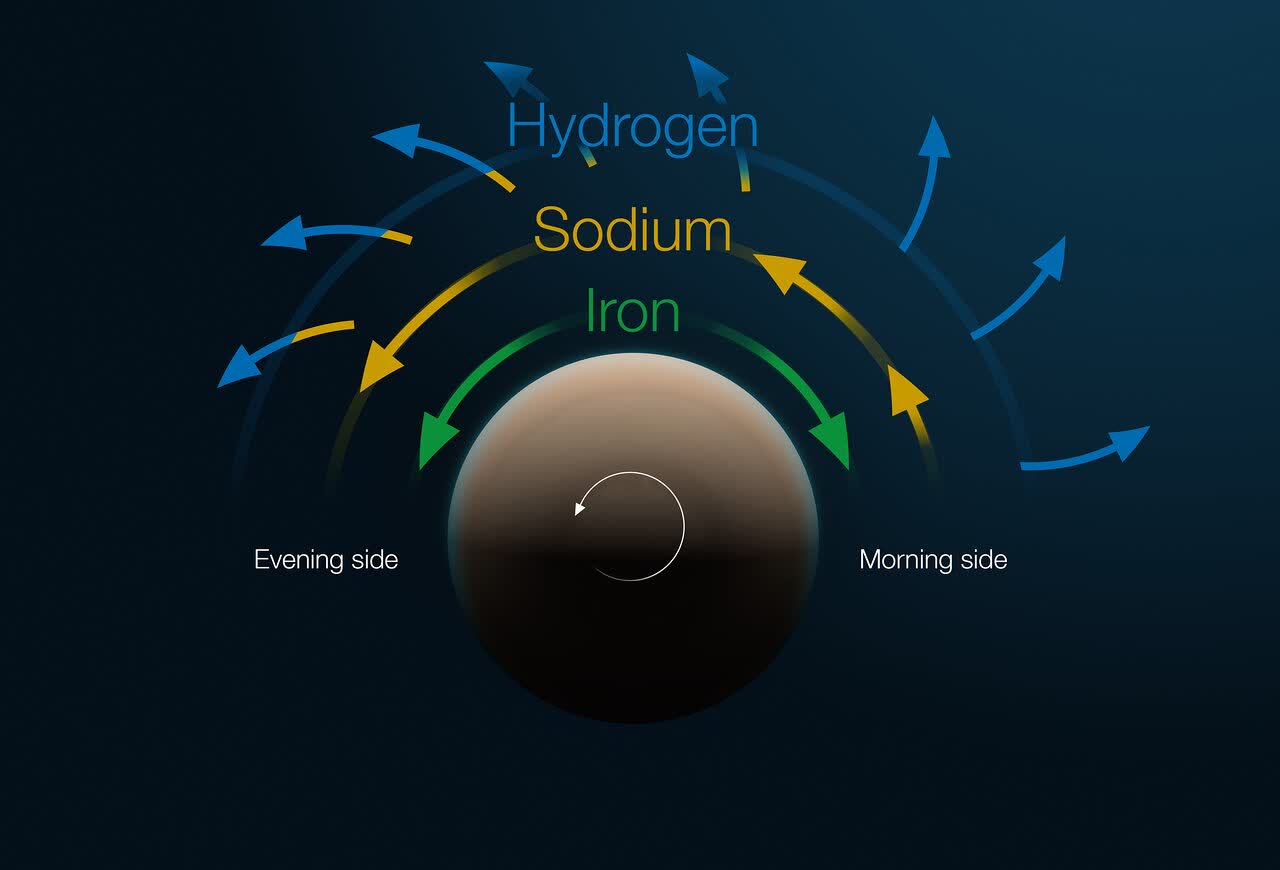The big picture: Nearly 6,000 exoplanets have now been confirmed in the vast expanse of the Milky Way galaxy. Some are believed to have the potential to harbor life, while others are so hostile that they make Venus seem mild by comparison. One such planet is the ultra-hot Jupiter known as WASP-121b, nicknamed Tylos – a world so extreme it defies expectations.
Located around 900 light-years away in the Puppis constellation, Tylos orbits its parent star at an absurdly close distance, completing a full “year” in just 30 hours. With one side perpetually scorched and the other locked in eternal darkness, you’d expect extreme weather – but new observations suggest its climate is even stranger than we imagined.
For the first time, astronomers have mapped the 3D structure of Tylos’ layered atmosphere using the European Southern Observatory’s spectroscopic instrument, ESPRESSO. This powerful tool combines light from the four largest Very Large Telescopes (VLTs) into a single, highly detailed signal.
By analyzing this data, scientists tracked the signatures of different elements across the planet’s atmospheric layers – iron in the deep atmosphere, sodium in the mid-atmosphere, and hydrogen at the top. Remarkably, this is the first time researchers have been able to examine an exoplanet’s atmosphere in such depth.
Scientists found powerful jet streams whipping around horizontally, while deep vertical currents transport energy between layers, creating a turbulent atmospheric system unlike anything seen before. The findings, published in Nature, challenge our understanding of planetary weather.
“This planet’s atmosphere behaves in ways that challenge our understanding of how weather works – not just on Earth, but on all planets,” said ESO researcher Julia Victoria Seidel. “It feels like something out of science fiction.”
The study reveals that a jet stream encircles Tylos’ equator, hurling clouds of vaporized metal faster than the planet can rotate. Meanwhile, a separate flow pattern near the surface shuttles gas from the blistering dayside to the cooler nightside.
And the strangeness doesn’t stop there. Tylos’ surface temperatures soar above 2,700°C (4,900°F), with skies thick with vaporized metals like iron and titanium, carried by the planet’s ferocious winds. The discovery of titanium is particularly novel – previous surveys failed to detect it, as it was buried deep in the atmospheric layers. This new finding is detailed in a second study.
But perhaps the most mind-bending fact? Tylos experiences sapphire and ruby rain. A planet of liquid gemstones, blistering heat, and metal clouds – life, needless to say, is out of the question.
Source link
